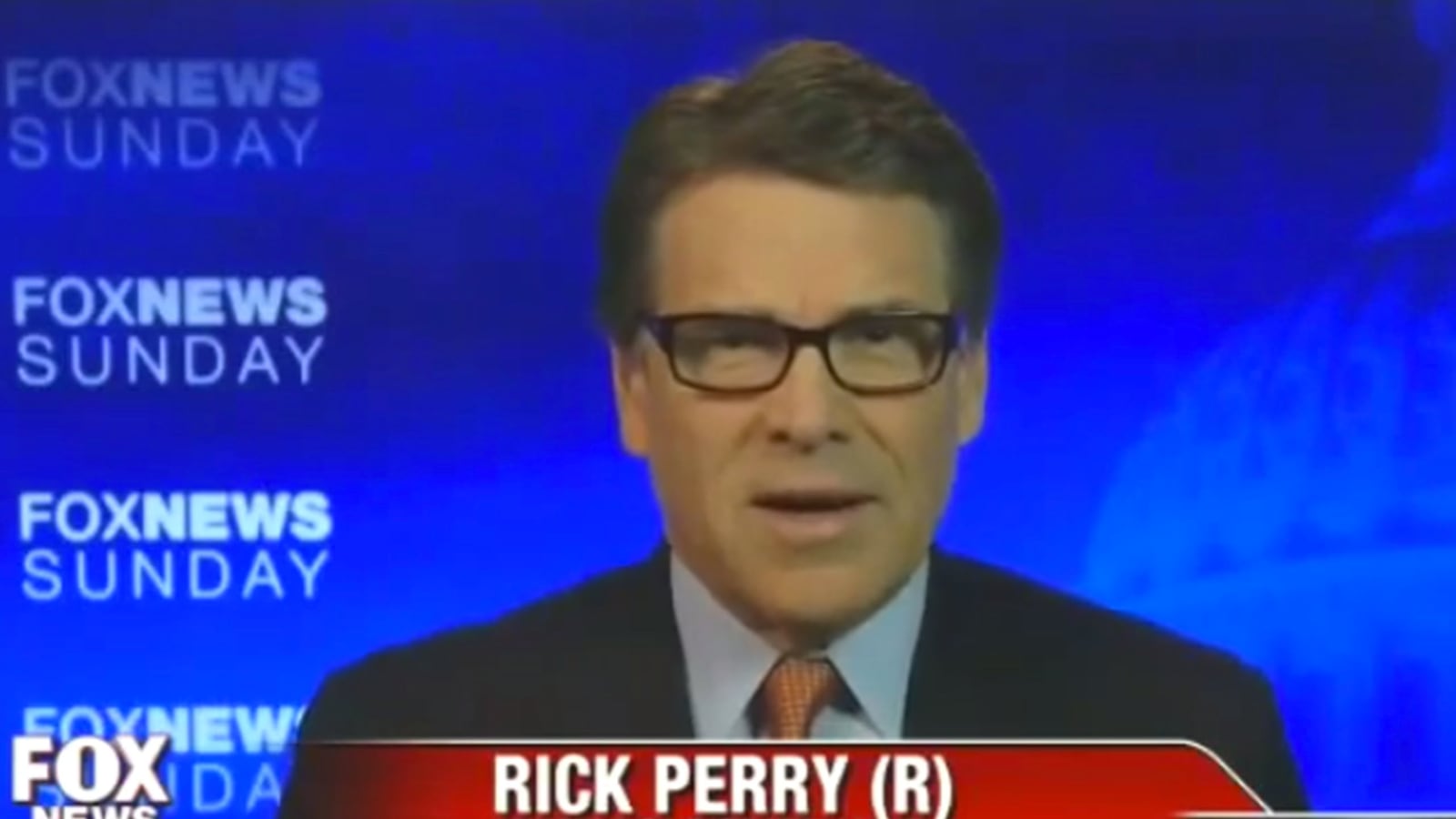By Aaron Sharockman
Politicians and pundits tried to find someone to blame Sunday for the influx of thousands of Central American children at the southern border of the United States, with Republicans singling out President Barack Obama for sending a “message” that America wouldn’t enforce its immigration laws.
On Fox News Sunday, Texas Gov. Rick Perry said “the message is, ‘Hey come on up here, everything is great, they’re taking care of us.’” On Meet the Press, former Pennsylvania Sen. Rick Santorum took Perry’s thought a step further. “We have a president who said, ‘Hey, if you come, you’re going to be able to stay, because we’re not going to enforce the law.’”
Children from Central America are currently allowed to stay in the United States and receive a hearing before potentially being deported as part of a 2008 human trafficking law signed by President George W. Bush. But Republicans say Obama’s 2012 executive decision to allow some undocumented children residing here since 2007 to remain has prompted more children to stream toward the border.
We decided to check Santorum’s claim that Obama said or suggested that, if these children come, they’re “going to be able to stay, because we’re not going to enforce the law.”
For the record, Obama did not say those words. We tried to contact Santorum to clarify his meaning and did not hear back. But other Republicans have argued the same thing and pointed to Obama’s 2012 executive order.
The executive order allowed certain young people without legal immigration status to apply for a two-year deferral of any removal proceedings. That deferral could be extended and anyone who was accepted would also gain the ability to work in this country. Generally speaking, it targeted people who had come across the border with their parents when they were little and had lived in the United States for many years.
The move came after Republicans rejected a bill, the DREAM Act, that would have put these people on the path to citizenship.
But importantly, no child arriving at the border today would meet the criteria Obama set out, said immigration lawyer and Cornell Law School professor Stephen Yale-Loehr.
“Among other things, the kid must have arrived before June 15, 2012,” Yale-Loehr said.
A frequent and related Republican talking point is that this move from Obama triggered the influx. However, based on numbers from the Homeland Security Department, the rapid rise began in 2011, before Obama announced his policy.
The closest thing we could find to support Santorum's point is an open letter by the Homeland Security Secretary Jeh Johnson to Central Americans. That letter acknowledged there could be a connection between Obama's executive order and the influx of children from Central America -- even though the executive order would not apply to the children approaching the border today.
Santorum’s claim rates Mostly False.
While Obama’s immigration executive order was a focus Sunday, so were his other unilateral executive actions. House Speaker John Boehner wants the House of Representatives to sue Obama for overstepping the limits of executive authority.
But on CNN’s State of the Union, freshman Rep. Beto O’Rourke, D-Texas, argued that Obama has used his executive authority more sparingly than his predecessors.
"This president has offered fewer executive actions than almost any other president preceding his presidency in recent history," O’Rourke said.
The number of executive actions taken by Obama doesn’t preclude the possibility that Obama overstepped constitutional boundaries, but we were curious if O’Rourke had his statistic correct.
It turns out O’Rourke used the wrong word, “actions,” when he should have said “orders.” As such, his claim rates Half True.
There is no doubt Obama has issued executive orders at a pace slower than most presidents in recent history.
According to the American Presidency Project at the University of California Santa Barbara, Obama has so far signed fewer executive orders than every other president in the last 50 years except two -- Gerald Ford (who finished Richard Nixon’s second term) and George H. W. Bush (who served one term). And he’s signed fewer per day than every president back to Grover Cleveland, according to research by the Brookings Institution.
But executive orders are just one type of executive action, experts told us. Executive actions include officially enumerated orders and proclamations, presidential orders conveyed in writing in forms other than executive orders and proclamations and discretionary actions by executive agencies that a president encourages or tolerates and could stop or reverse, said John Woolley, a political science professor at UC Santa Barbara.
Woolley and others told us there’s really no way to compare presidents on the broader measure of executive actions.
"There is no single metric you can point to and say, ‘This president has executed more unilateral actions than other presidents,’ ” said Kenneth Mayer, a political science professor at the University of Wisconsin Madison.
Staff writers Jon Greenberg and Lauren Carroll contributed to this report. Aaron Sharockman is the editor of PunditFact.com.






